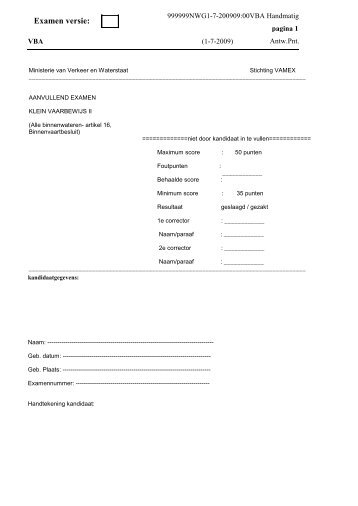• University of Pennsylvania MRSEC Michael L. Klein DMR-0520020 IRG 4:Synthetic Maquettes - Les Dutton Synthetic covalent cofactors can be incorporated readily into synthetic maquettes through the use of solid phase peptide synthesis (SPPS).

This Pin was discovered by Jaap van Goor. Discover (and save) your own Pins on Pinterest. Met de nieuwe app 'Examentraining Klein Vaarbewijs 1' kunt u op uw iPhone oefenen voor het examen Klein Vaarbewijs 1. De examentraining sluit aan op elk cursusboek en is ook goed te gebruiken naast bijvoorbeeld een (online) cursus. De app is te koop voor € 1,99 in de Appstore van Apple.
We have prepared a naphthoquinone amino acid (Naq) for Fmoc-SPPS, which will greatly ease the study of quinones in maquettes. The high yielding synthesis begins with commercially available 1,4-dihydroxy-2-naphthoic acid, itself an intermediate in the biosynthesis of the naphthoquinone cofactor vitamin K. Fmoc-Naq(OMe/OMe)-OH is produced with a total yield from starting material of 67% after seven transformations and shows coupling efficiencies identical to protected naturally occurring amino acids. Atmosphere Weather And Climate Barry Pdf Creator. The figure shows an example synthesized Naq containing peptide designed to reversibly fold around a lanthanum ion.
Because the robust methyl groups protecting the quinone carbonyls are difficult to remove with standard SPPS deprotection strategies, we are currently pursuing a general approach that is strong enough to efficiently deprotect Naq but gentle enough to avoid chemical modification of electron rich amino acids such as tryptophan and tyrosine. We are also developing a synthesis of Naq with non-methyl protecting groups. • University of Pennsylvania MRSEC Michael L. Klein DMR-0520020 IRG 4:Synthetic Maquettes - Les Dutton Synthetic covalent cofactors can be incorporated readily into synthetic maquettes through the use of solid phase peptide synthesis (SPPS). We have prepared a naphthoquinone amino acid (Naq) for Fmoc-SPPS, which will greatly ease the study of quinones in maquettes. The high yielding synthesis begins with commercially available 1,4-dihydroxy-2-naphthoic acid, itself an intermediate in the biosynthesis of the naphthoquinone cofactor vitamin K. Fmoc-Naq(OMe/OMe)-OH is produced with a total yield from starting material of 67% after seven transformations and shows coupling efficiencies identical to protected naturally occurring amino acids.
The figure shows an example synthesized Naq containing peptide designed to reversibly fold around a lanthanum ion. Because the robust methyl groups protecting the quinone carbonyls are difficult to remove with standard SPPS deprotection strategies, we are currently pursuing a general approach that is strong enough to efficiently deprotect Naq but gentle enough to avoid chemical modification of electron rich amino acids such as tryptophan and tyrosine. We are also developing a synthesis of Naq with non-methyl protecting groups.